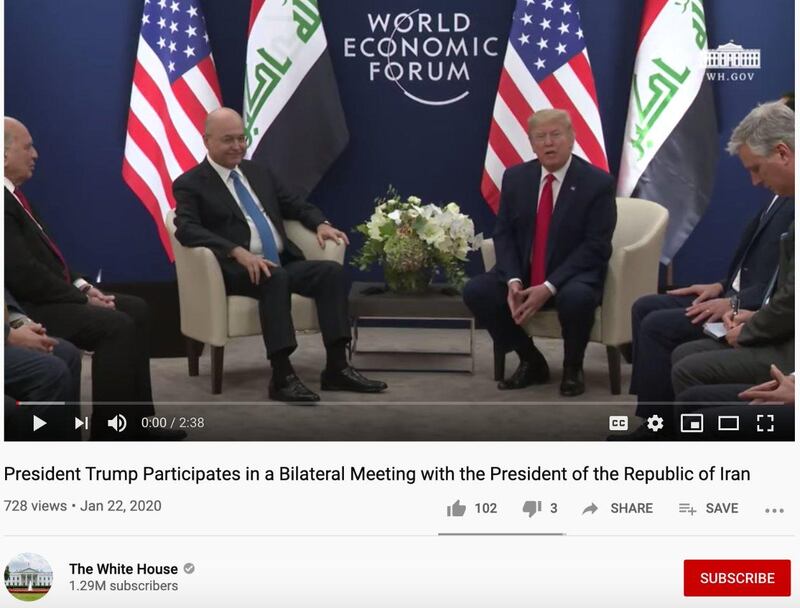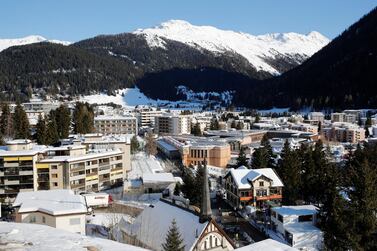The White House’s official YouTube channel has accidentally called Iraqi President Barham Salih the President of the Republic of Iran during a live-streamed meeting.
The mistake occurred during the live streaming of a meeting between US President Donald Trump and Mr Salih at the annual World Economic Forum in Davos on Wednesday.
“President Trump participates in a bilateral meeting with the President of the Republic of Iraq,” the video was titled.
People took to social media to point out the gaffe.
Erm... that's the President of Iraq, @BarhamSalih. pic.twitter.com/7I8k4VNFeH
— Louisa Loveluck (@leloveluck) January 22, 2020
“According to the official White House YouTube account, Donald Trump is under the impression he’s having a bilateral meeting with the president of Iran on the sidelines of Davos,” Hooman Majd, a New York based author, wrote on Twitter.
The pair discussed the reduction of foreign troops in Iraq as well as recent tensions between Washington and Tehran.
The American president also met his Iraqi Kurdish counterpart, Nechirvan Barzani, where he mistook him to be a Kurdish official from the administration in north-eastern Syria.
Mr Trump spoke about the situation in Syria, following Turkey’s cross-border operation against the US-backed Syrian Democratic Forces (SDF).
“As you know, we left Syria from the standpoint of the border, and that’s worked out great with Turkey. They have the so-called safe zone,” Mr Trump said.
US forces pulled out of northern Syria in October under a cease-fire agreement between Washington and Ankara.
It paved the way for a Turkish assault on the Pentagon's allies, the Syrian Kurds.
Mr Trump thanked Mr Barzani for keeping the safe-zone as "safe as possible".
“But, very importantly, as you know, we have the oil and we left soldiers for the oil because we took the oil and we’re working on that and we have it very nicely secured,” the US president said.
Mr Barzani became the president of the Kurdistan Regional Government in Iraq last May.
Iran and the US have been at odds for decades, predating the Trump administration.
The two states cut diplomatic ties following Iran's Islamic revolution in 1979, which the US viewed as purely hostile and dangerous. In recent months tensions have approached the brink of conflict.
Iraq, this time, is caught in the middle.
Iraq's parliament passed a non-binding resolution on January 5 requesting the government to end the presence of foreign troops in Iraq following US air strikes that killed Iranian General Qassem Suleimani and Iraqi militia commander Abu Mahdi Al Muhandis.
The killing of Suleimani, to which Tehran responded with a ballistic missile attack on two Iraqi military bases housing US forces, has highlighted the influence of foreign powers in Iraq, especially Iran and the United States.
Iraqi Prime Minister Adel Abdul Mahdi asked Washington to prepare for a US troop withdrawal in line with Iraq's parliament decision, but Mr Trump's administration rebuffed the request.
Washington said later it was exploring a possible expansion of Nato’s mission in Iraq, a plan to “get burden-sharing right in the region”.







